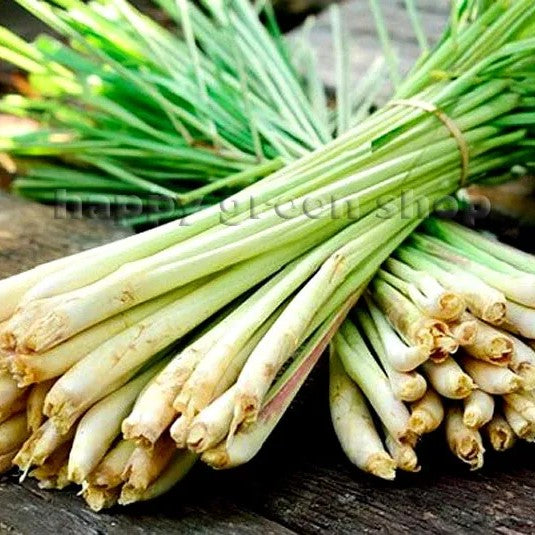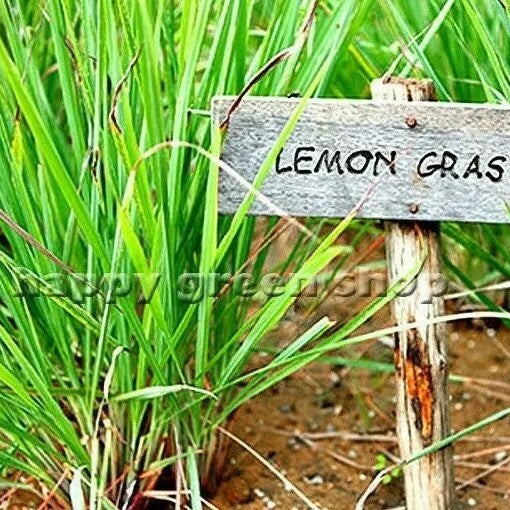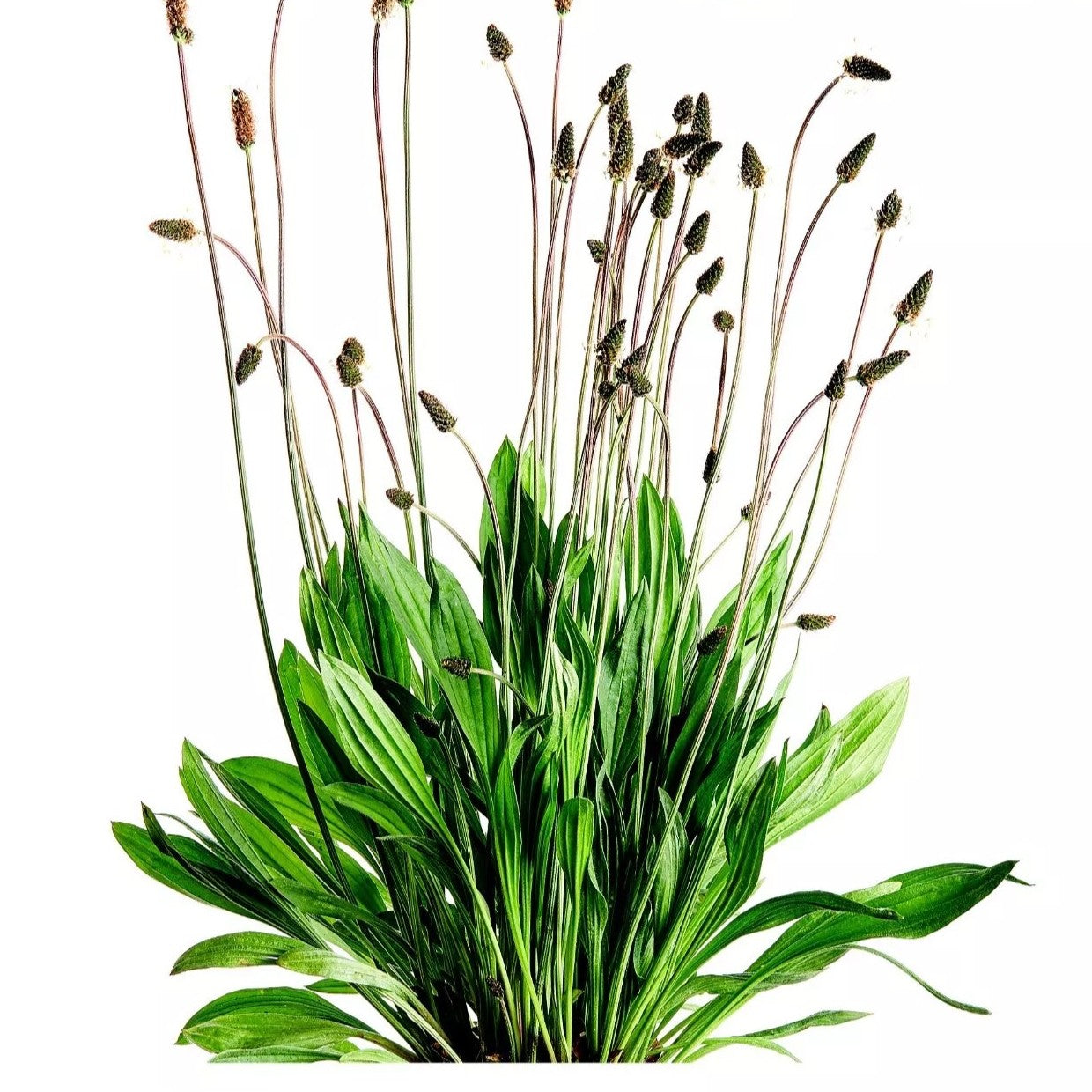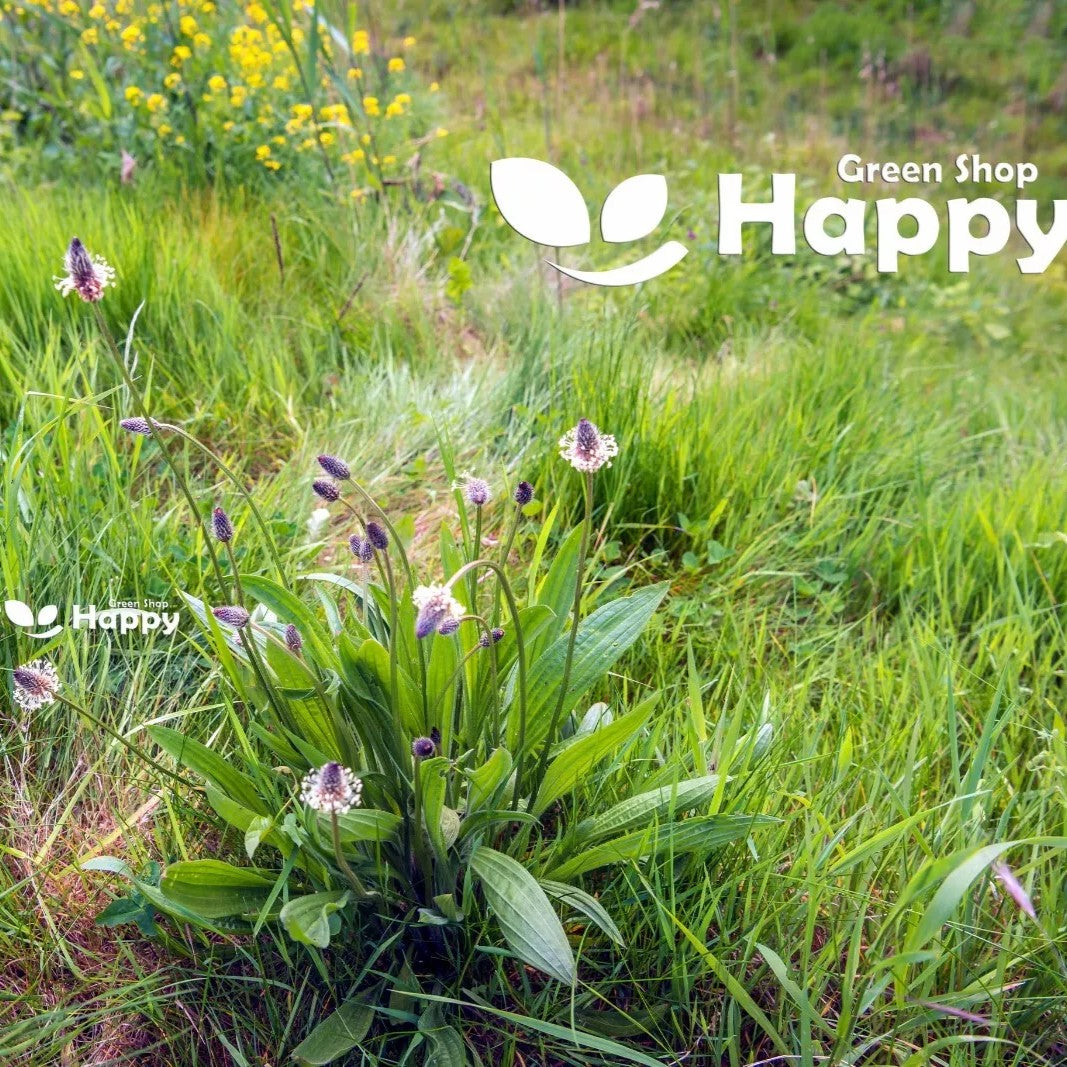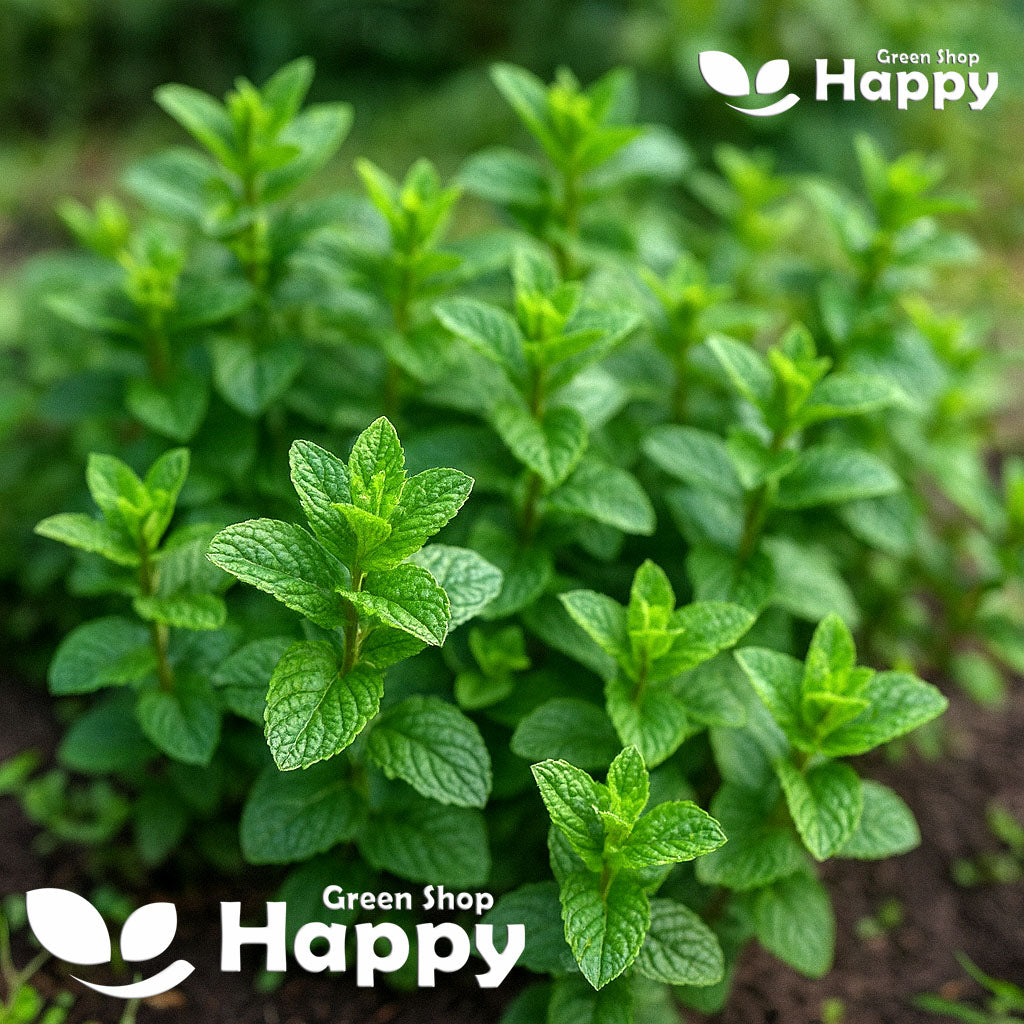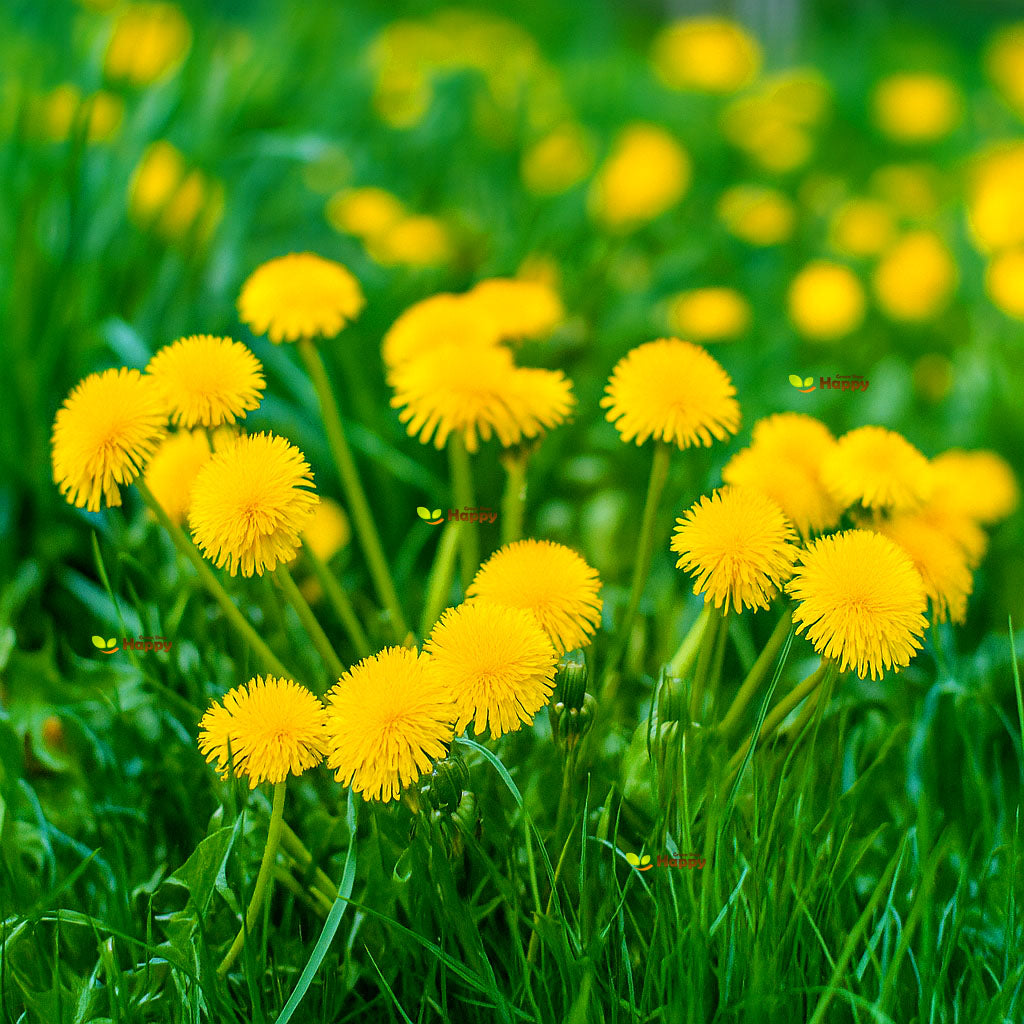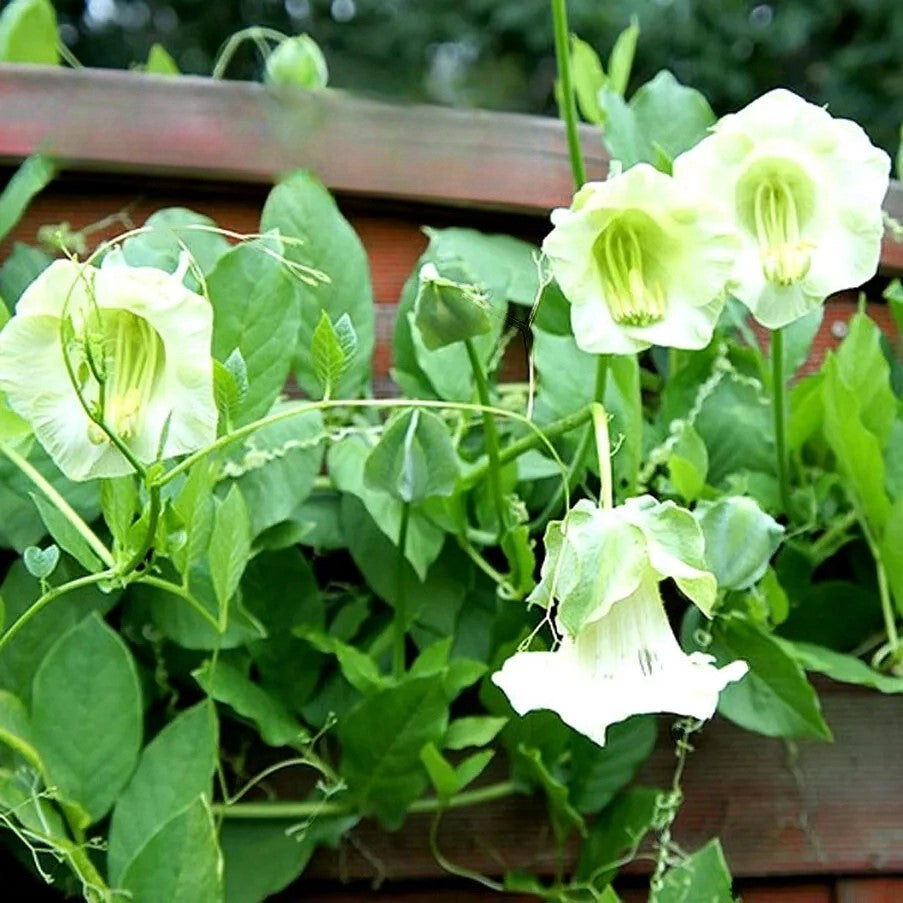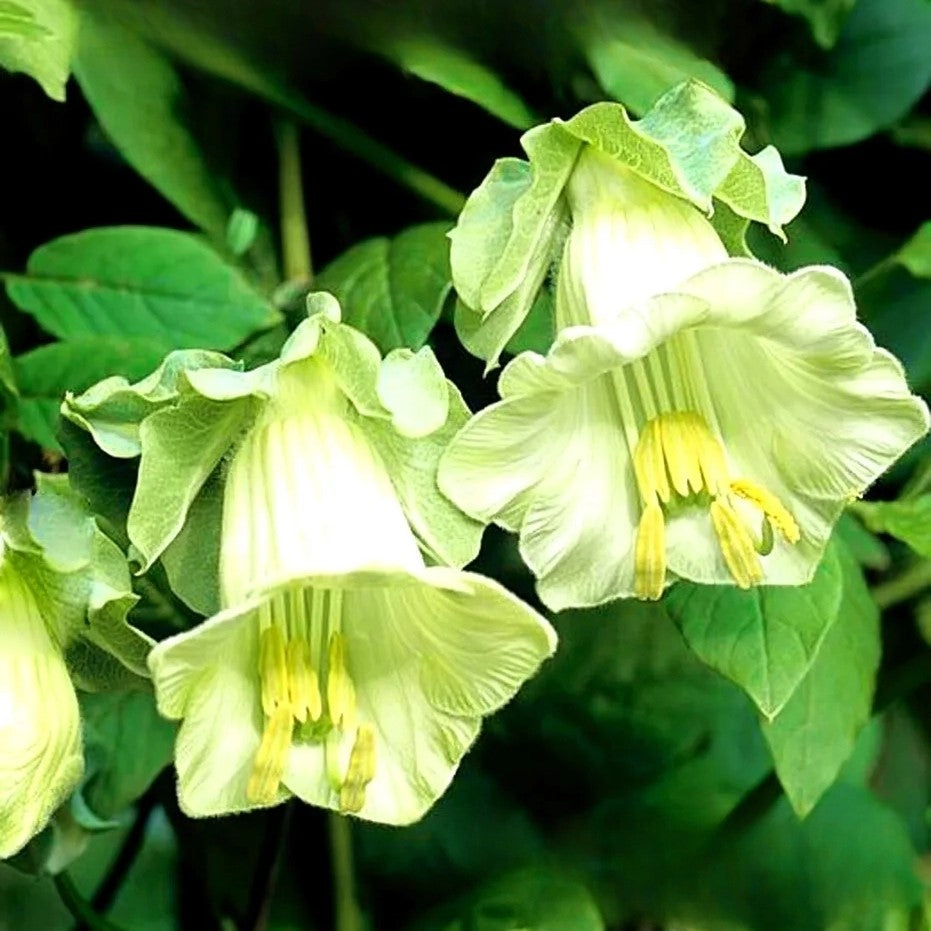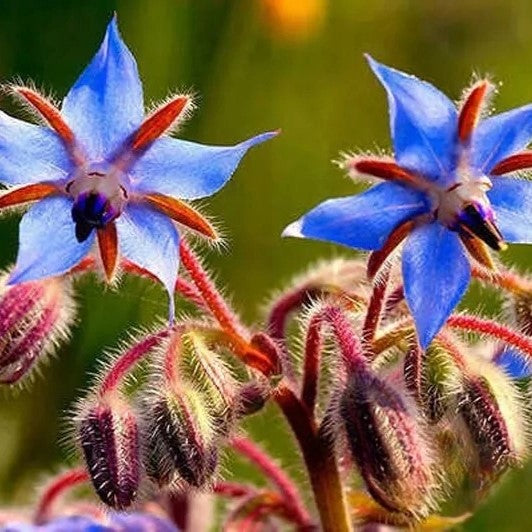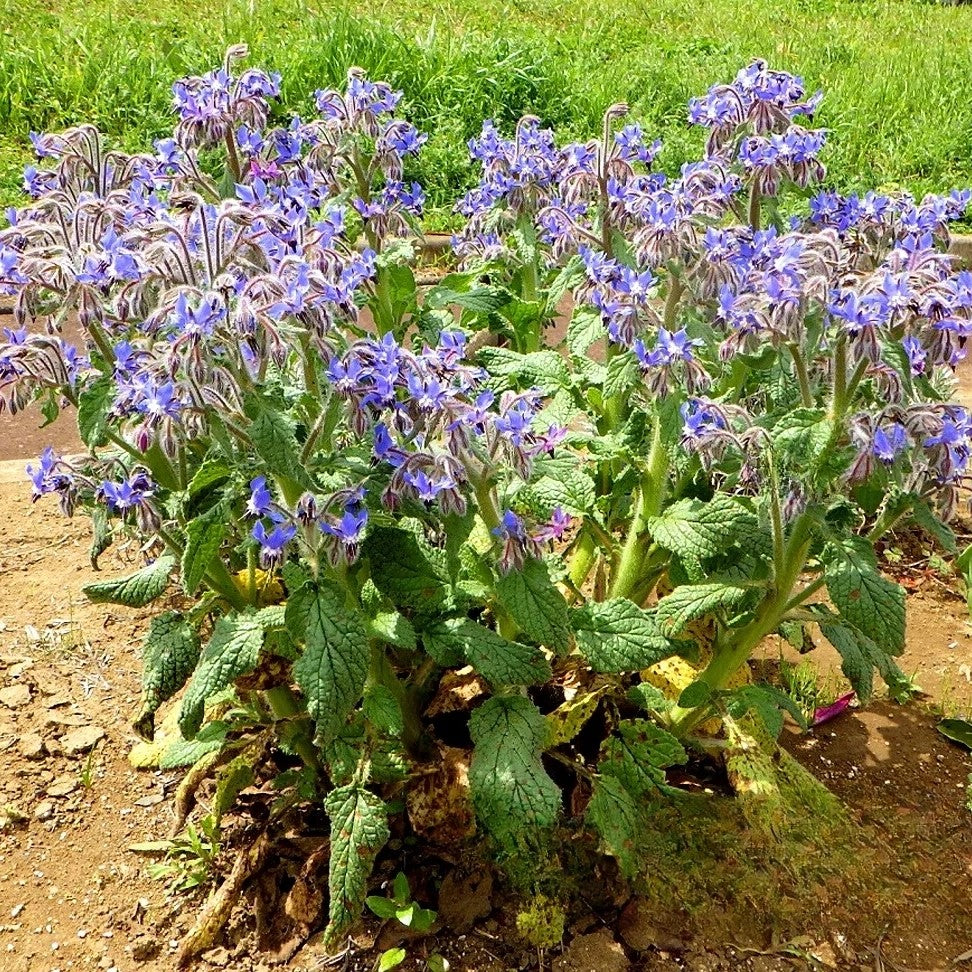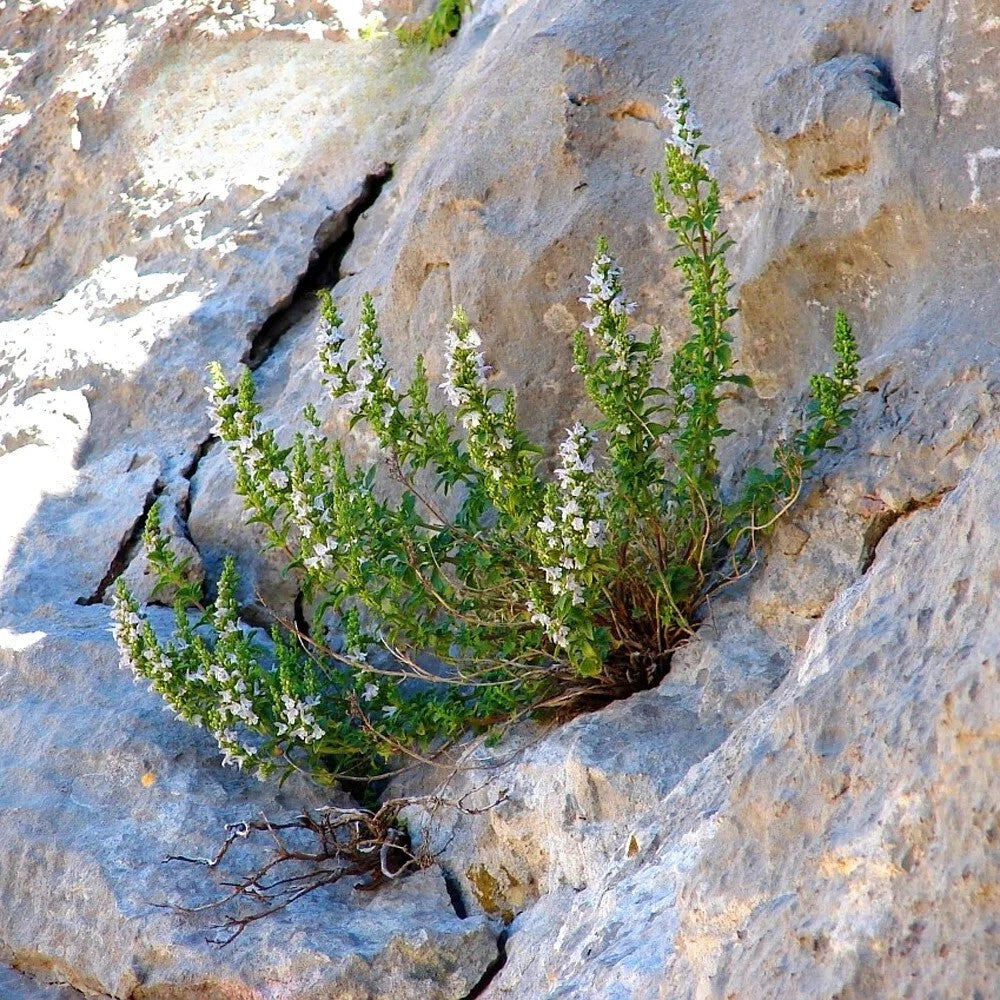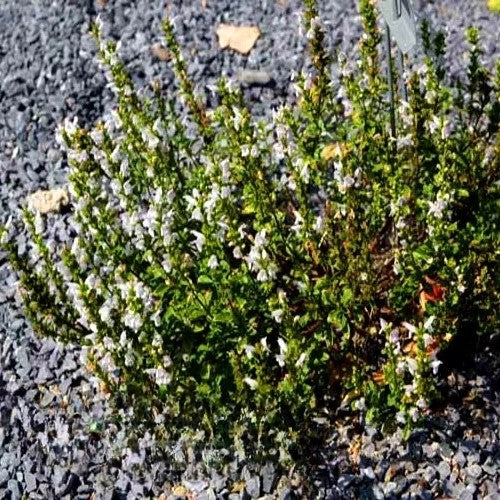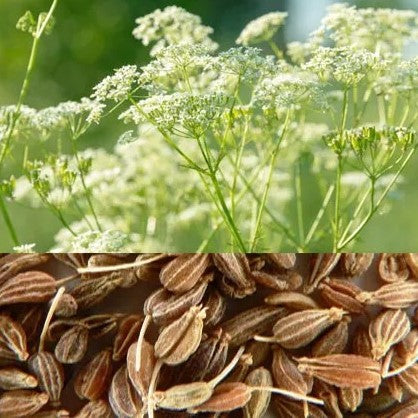Sort by:
18 products
18 products
Lemongrass – Seeds (Cymbopogon flexuosus)
Lemongrass is a wonderfully fragrant herb, widely used in Asian cuisine for its fresh citrus flavor. This versatile plant can be grown in containers, kitchen gardens, or even indoors on a sunny windowsill. Both the leaves and stems are edible, perfect for curries, teas, marinades, and stir-fries. An attractive, clump-forming grass, it also adds a decorative touch to herb borders.
How to Grow
-
Sow indoors: February – April in trays or pots of seed compost with gentle heat.
-
Transplant: When seedlings are large enough, pot on or plant outdoors after the last frost.
-
Soil: Fertile, free-draining soil in full sun.
-
Spacing: 30–40 cm apart.
-
Keep soil moist and protect from cold.
Key Features
-
Fragrant herb with citrus aroma
-
Essential for Asian cooking
-
Edible stems and leaves
-
Can be grown in pots, containers, or beds
-
Attractive clump-forming grass
Ideal For
-
Asian-inspired dishes, teas, and marinades
-
Herb gardens, borders, and container growing
-
Indoor growing on sunny windowsills
Sowing & Harvest
-
Sow: February – April
-
Harvest: July – October (leaves and stems when mature)
Quick Tip
For a continuous harvest, cut stalks at the base while leaving the plant to regrow. In cooler climates, grow in pots and overwinter indoors.
Lemon Balm – Seeds (Melissa officinalis)
Lemon Balm is a hardy perennial herb valued for its refreshing lemon-scented leaves. Perfect for teas, desserts, and savory dishes, it also makes a soothing herbal remedy often used to promote relaxation. Its fragrant foliage attracts bees and pollinators, while its resilience makes it an easy-to-grow choice for gardens, pots, or borders.
How to Grow
-
Sow indoors: March – May in trays at 18–20°C.
-
Sow outdoors: May – July in a sunny or lightly shaded spot.
-
Thin or transplant seedlings to 30 cm apart.
-
Prefers fertile, well-drained soil.
-
Cut back after flowering to encourage fresh growth.
Key Features
-
Hardy perennial with refreshing lemon scent
-
Aromatic leaves for teas, salads, and cooking
-
Excellent for herbal remedies and relaxation
-
Attracts bees and pollinators
-
Easy to grow in borders or containers
Ideal For
-
Herbal teas and drinks
-
Culinary use in sweet and savory dishes
-
Herb gardens, borders, and patio pots
Sowing & Harvest
-
Sow: March – July
-
Harvest: May – October
Quick Tip
Pick leaves early in the morning for the best flavor and fragrance.
English Plantain – Seeds (Plantago lanceolata)
English Plantain is a hardy perennial herb valued for its medicinal properties and ecological benefits. Known for its narrow, lance-shaped leaves, it is often used in herbal remedies, teas, and natural skincare preparations. English Plantain is also a beneficial plant for pollinators and soil health, making it perfect for ecological or medicinal gardens.
This low-maintenance plant thrives in a variety of soils and conditions, returning year after year with minimal care.
How to Grow
-
Sow outdoors: March – May
-
Plant spacing: 20–25 cm between plants
-
Position: Full sun to partial shade
-
Soil: Well-drained, moderately fertile soil
-
Care: Minimal maintenance; water during dry periods; remove weeds to prevent competition
Key Features
-
Hardy perennial with lance-shaped leaves
-
Medicinal uses for teas, herbal remedies, and skincare
-
Low-maintenance and drought-tolerant
-
Supports pollinators and improves soil health
-
Suitable for ecological, medicinal, or wildflower gardens
Harvest
-
Harvesting period: 60–90 days after sowing
-
Leaves can be harvested as needed; best used when young and tender.
Short Tip
Sow in well-drained soil and allow natural self-seeding to create a sustainable, low-maintenance plant patch.
Dwarf Spearmint – Seeds (Mentha spicata)
The Dwarf Spearmint is a compact and aromatic herb, prized for its refreshing flavor and versatility. With its smaller, bushy growth habit, it’s perfect for container gardening, herb borders, and kitchen windowsills. Its bright green leaves bring a cool, sweet taste to teas, salads, desserts, and savory dishes, while also offering natural health benefits.
How to Grow
-
Sow seeds indoors in early spring or directly outdoors after frost.
-
Scatter seeds thinly on the surface of moist soil and lightly press down.
-
Keep in a sunny to partly shaded spot with regular watering.
-
Harvest young leaves as needed to encourage fresh growth.
Key Features
-
Compact, bushy spearmint variety
-
Refreshing sweet-mint flavor
-
Excellent for containers, windowsills, and small spaces
-
Perennial herb with continuous harvests
-
Culinary and medicinal uses
Ideal For
-
Fresh teas, cocktails, and infused water
-
Salads, sauces, and desserts
-
Small gardens, pots, and indoor growing
Sowing & Harvest
-
Sow: March to June
-
Harvest: May onwards, throughout the season
Quick Tip
-
Regular trimming keeps plants compact and prevents them from spreading too aggressively.
Dandelion – Seeds (Taraxacum officinale)
Dandelion (Taraxacum officinale) is a hardy perennial known for its bright yellow flowers and fluffy seed heads. A versatile and low-maintenance plant, it attracts pollinators such as bees and butterflies, supports beneficial insects, and can be used in salads, teas, and herbal remedies. Ideal for wildflower gardens, meadows, and naturalized areas, it adds color and ecological value while requiring minimal care.
Why Grow "Dandelion"
-
Bright yellow flowers and distinctive seed heads
-
Attracts pollinators and beneficial insects
-
Edible leaves and flowers for salads and teas
-
Low-maintenance and hardy in most soils
Key Features
-
Type: Perennial (Taraxacum officinale)
-
Height: 15–30 cm
-
Flowering: Spring to autumn
-
Position: Full sun to partial shade
-
Uses: Wildflower gardens, meadows, naturalized areas, edible gardens
Ideal For
-
Naturalized or meadow-style gardens
-
Pollinator-friendly planting
-
Edible and herbal gardens
-
Gardeners seeking low-maintenance, ecological plants
Sowing & Growing
-
Sow indoors: Early spring
-
Sow outdoors: Directly in soil after frost
-
Germination: 7–14 days
-
Space seedlings: 10–15 cm apart
-
Prefers well-drained soil and sunny locations
Cup and Saucer White – 15 Seeds (Cobaea scandens)
The Cup and Saucer Vine (White) is a fast-growing climber with elegant, bell-shaped blooms resembling little teacups. Its trailing vines quickly cover fences, arches, and trellises, creating a stunning vertical display. A perfect choice for adding a touch of elegance and charm to summer gardens.
What Makes It Special
-
Unique cup-and-saucer shaped blooms
-
Rapid-growing climbing vine
-
Long-lasting flowers from summer to frost
-
Adds instant charm to vertical garden spaces
Key Features
-
Half-hardy perennial, often grown as an annual
-
Height: up to 3–6 m
-
Large white, bell-shaped flowers
-
Prefers full sun to partial shade
-
Attracts bees and pollinators
Ideal For
-
Fences, walls, arches, pergolas, and trellises
-
Cottage gardens and romantic garden themes
-
Vertical displays and privacy screens
-
Cut flowers for unique arrangements
Sowing
-
Sow indoors 8–10 weeks before the last frost
-
Pre-soak seeds for 12–24 hours before sowing
-
Place seeds on their side, just under the surface of soil
-
Germination: 20–30 days at 18–20°C
-
Harden off and transplant outdoors after frost, spacing 30–45 cm apart
Borage – Seeds
(Borago officinalis) – Edible Flowers & Pollinator Magnet
Borage, also known as the starflower, is a fast-growing annual herb admired for its vivid blue, star-shaped flowers and fuzzy, cucumber-flavored leaves. A favorite of bees, butterflies, and other pollinators, it makes an excellent addition to herb gardens, vegetable patches, or pollinator-friendly borders. Both flowers and young leaves are edible – perfect for garnishing salads, desserts, drinks, or freezing into ice cubes.
Key Features
-
Plant type: Annual herb
-
Height: 50–70 cm
-
Spread: 30–40 cm
-
Flowers: Bright blue, star-shaped
-
Foliage: Grey-green, hairy leaves with cucumber flavor
-
Position: Full sun to light shade
-
Soil: Moderately fertile, well-drained
Ideal For
-
Herb & cottage gardens
-
Attracting pollinators (especially bees)
-
Edible flowers & herbal teas
-
Companion planting with tomatoes, strawberries, and courgettes
Sowing & Growing
-
Sow outdoors: April–June, direct in soil, 1 cm deep.
-
Germination: 7–14 days.
-
Spacing: Thin to 30 cm apart.
-
Flowering: June–September.
Care Tips
-
Easy to grow and self-seeding – will naturalize readily.
-
Pinch back growing tips for bushier plants.
-
Collect flowers regularly to encourage continuous blooming.
-
Water in dry spells but avoid overwatering.
Balkan Mint – 200 Seeds (Micromeria thymifolia)
Balkan Mint is a hardy, aromatic perennial herb with small, fragrant leaves and delicate flowers. Known for its refreshing minty aroma, it is perfect for teas, culinary use, garnishes, and herbal remedies. Its compact growth habit makes it an excellent addition to herb gardens, rockeries, or containers.
Thrives in well-drained soils and sunny locations, Balkan Mint is drought-tolerant and easy to maintain, making it ideal for both beginners and experienced gardeners.
How to Grow
-
Sow indoors: February – April
-
Sow outdoors: After last frost
-
Plant spacing: 20–25 cm apart
-
Position: Full sun to partial shade
-
Soil: Well-drained, moderately fertile soil
-
Care: Water moderately; trim leaves regularly to encourage bushy growth
Key Features
-
Hardy perennial with small, fragrant leaves
-
Refreshing minty aroma for teas, cooking, and garnishes
-
Drought-tolerant and low-maintenance
-
Compact growth ideal for gardens, rockeries, or containers
-
Produces delicate flowers adding ornamental value
Harvest
-
Harvesting period: 60–90 days after sowing
-
Pick leaves as needed; regular harvesting promotes continuous growth.
Short Tip
Grow in full sun and well-drained soil for the best aroma and compact growth.
Anise Seeds (Pimpinella anisum)
Grow your own aromatic spice with Anise (Pimpinella anisum). Known for its sweet, licorice-like flavor, this ancient herb produces delicate white umbels and seeds prized for baking, teas, liqueurs, and herbal remedies. A beautiful and useful plant, anise thrives in sunny spots and brings fragrance and flavor to both the garden and kitchen.
How to Grow
-
Sow seeds directly outdoors in spring after the last frost.
-
Choose well-drained, fertile soil in full sun.
-
Sow seeds 0.5–1 cm deep, spacing plants 20–30 cm apart.
-
Keep soil moist during germination (14–21 days).
-
Harvest seeds when flower heads turn brown and dry.
Key Features
-
Sweet, aromatic seeds with licorice-like flavor
-
Useful in baking, teas, and herbal medicine
-
Delicate white flowers that attract pollinators
-
Ancient herb with culinary and medicinal history
-
Easy to grow in sunny, well-drained soil
Ideal For
-
Culinary use in baked goods, teas, and liqueurs
-
Herbal remedies and natural medicine gardens
-
Pollinator-friendly gardens with fragrant blooms
-
Gardeners seeking dual-purpose beauty and flavor
Sowing
-
Best time: Spring, after last frost
-
Depth: 0.5–1 cm
-
Spacing: 20–30 cm apart
-
Prefers full sun and well-drained soil
Quick Tip
-
Harvest seeds early in the morning when flower heads are dry, then store in an airtight container to preserve their aromatic flavor.
Showing 18/18

